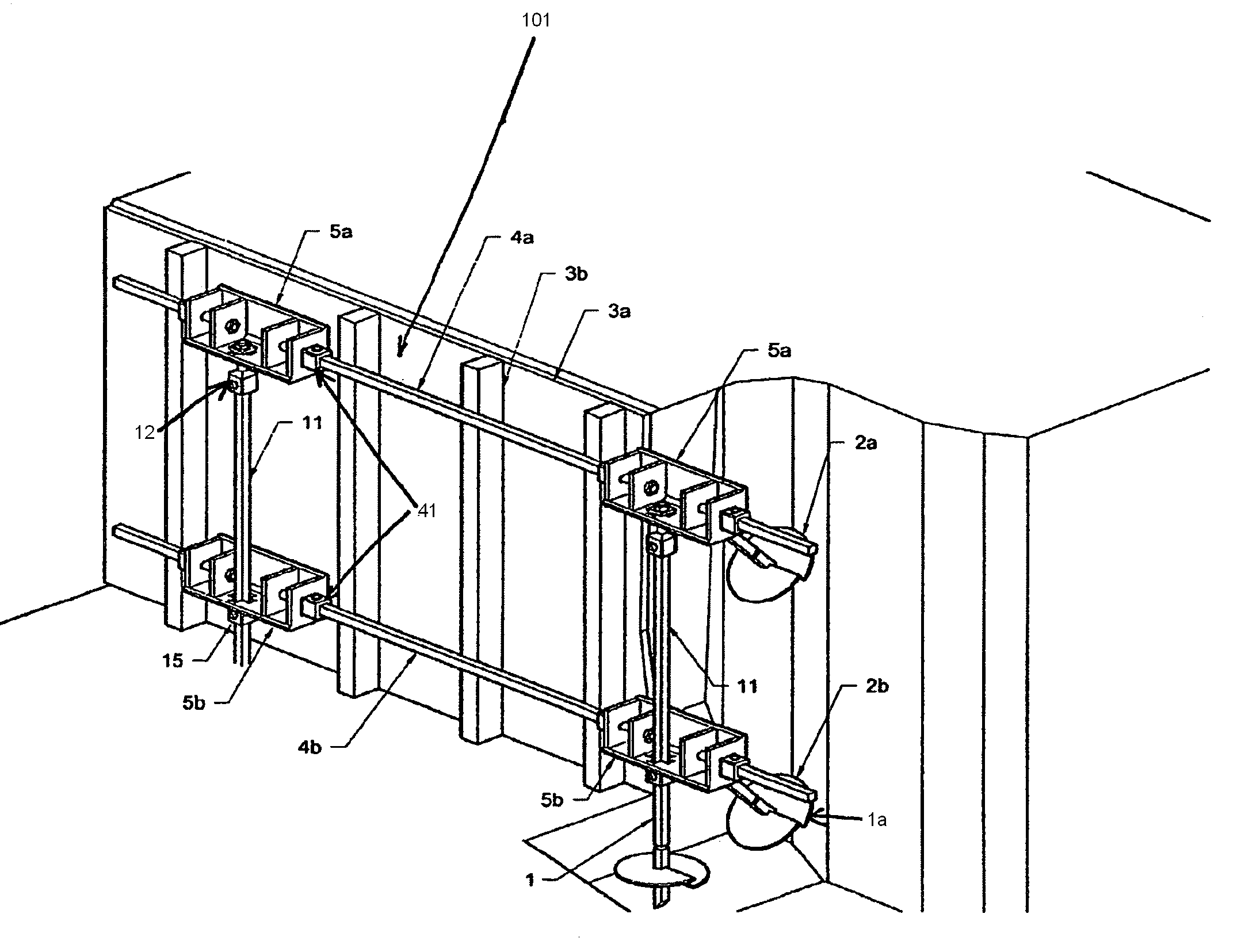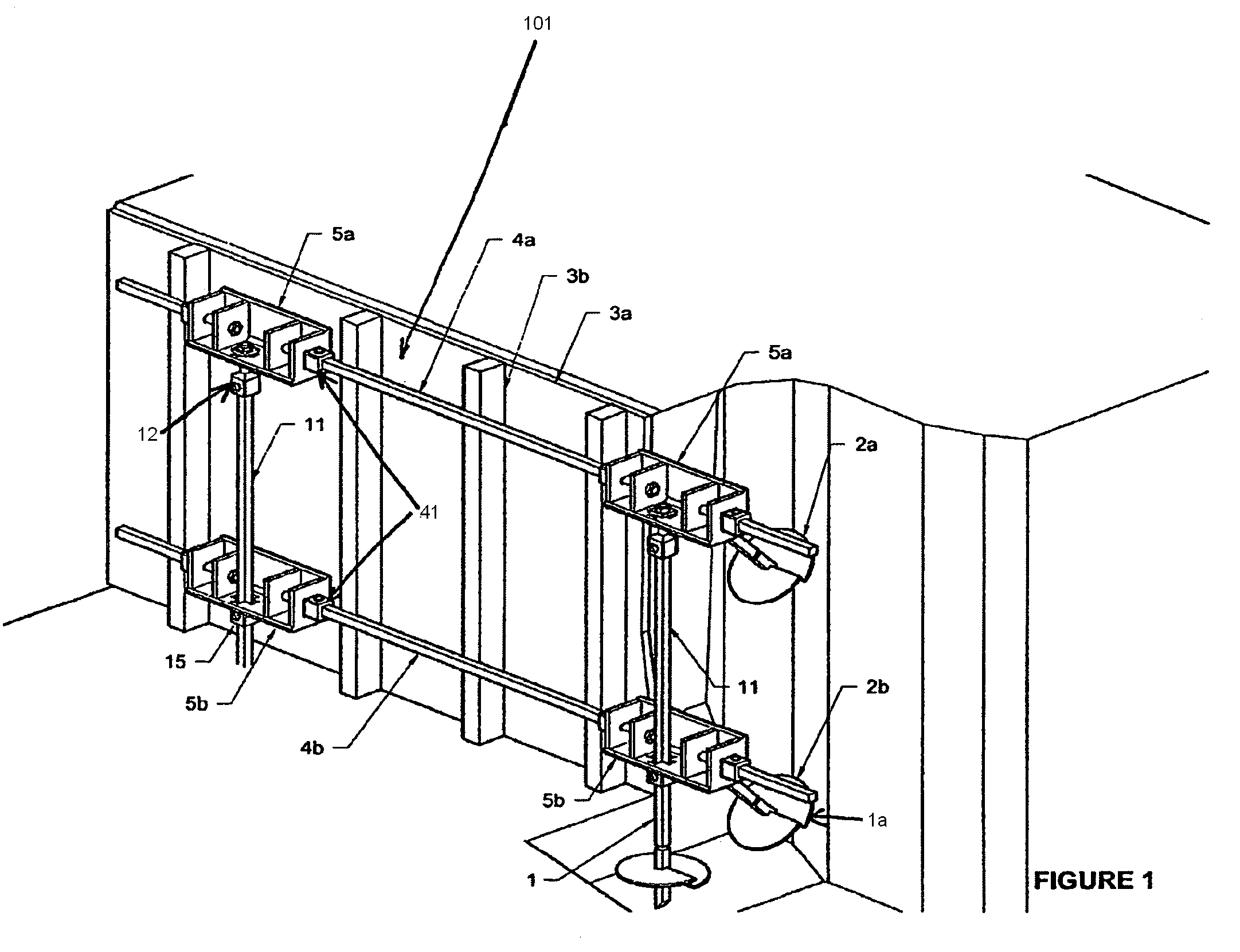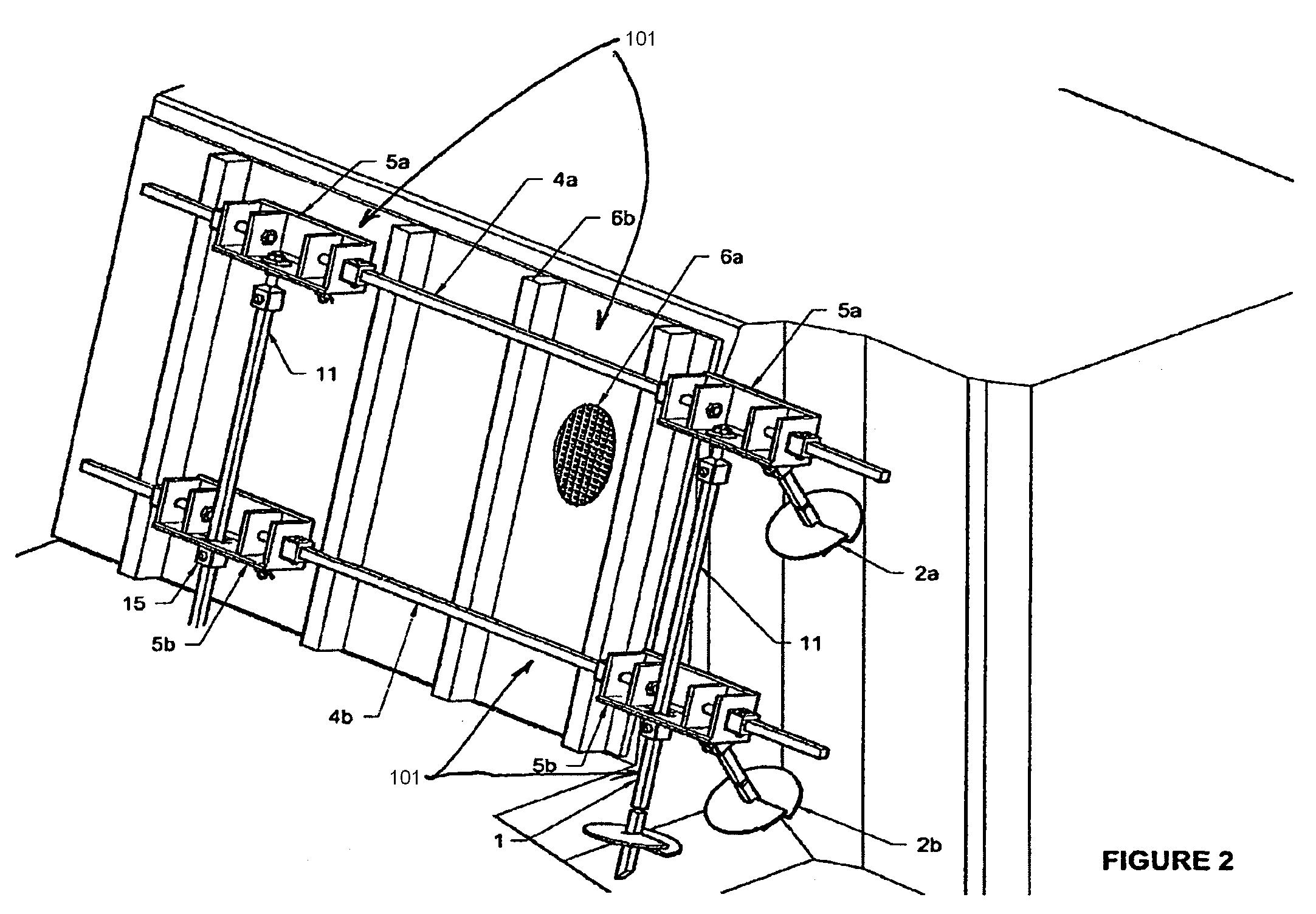Green retaining wall utilizing helical piers
a technology of helical piers and retaining walls, which is applied in the direction of mining structures, artificial islands, excavations, etc., can solve the problems of small strength, short service life, and inability of walls to withstand movement of soil, and achieves reduced cost, substantial load-bearing capacity, and reduced assembly time and environmental impact
- Summary
- Abstract
- Description
- Claims
- Application Information
AI Technical Summary
Benefits of technology
Problems solved by technology
Method used
Image
Examples
Embodiment Construction
[0024]The embodiments of the present invention are directed toward systems and methods for a soil retaining wall which minimize cost, assembly time and environmental impact while providing a substantial load-bearing capacity. The details of an exemplary embodiment of the present invention are explained with reference to FIGS. 1-4. The exemplary embodiment is described with reference to a two-level system, but it will be clear to a person skilled in the art that the described system and method can be used for any number of levels, depending on the height of the soil to be retained. Also, vertical wood lagging is illustrated as the load transmitter between the soil and the described embodiment, but a person skilled in the art would readily know of other suitable materials in other shapes that may be used.
[0025]FIG. 1 shows a wall retaining system or harness 101 that includes a vertical helical pier lead section 1, which is rotated into the ground to a required depth. Helical piers gen...
PUM
 Login to View More
Login to View More Abstract
Description
Claims
Application Information
 Login to View More
Login to View More - R&D
- Intellectual Property
- Life Sciences
- Materials
- Tech Scout
- Unparalleled Data Quality
- Higher Quality Content
- 60% Fewer Hallucinations
Browse by: Latest US Patents, China's latest patents, Technical Efficacy Thesaurus, Application Domain, Technology Topic, Popular Technical Reports.
© 2025 PatSnap. All rights reserved.Legal|Privacy policy|Modern Slavery Act Transparency Statement|Sitemap|About US| Contact US: help@patsnap.com



